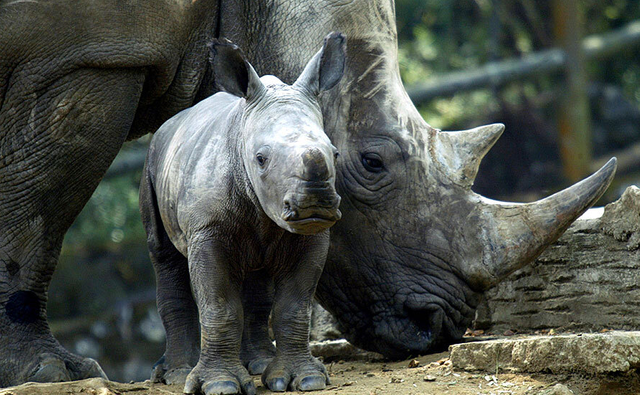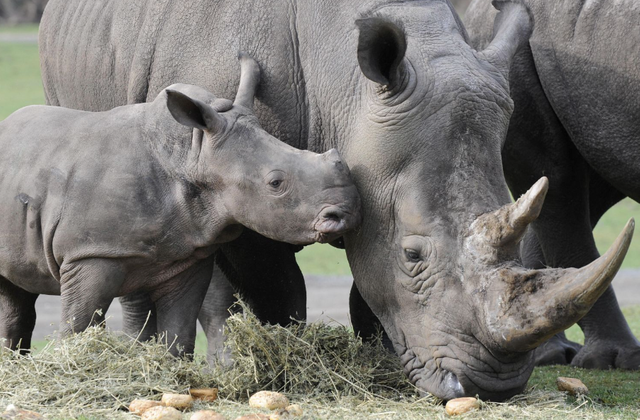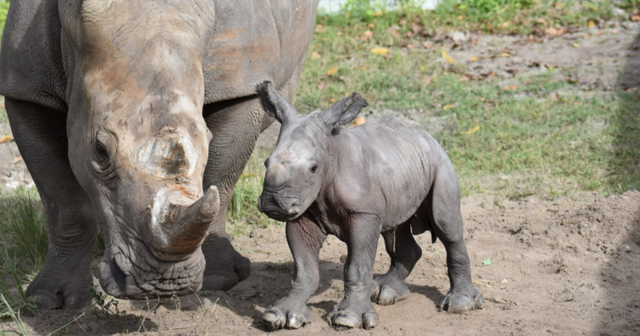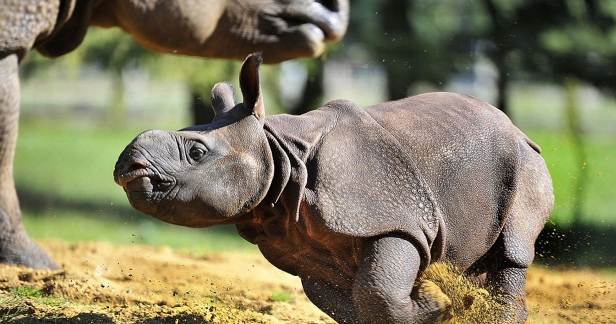Javan Rhino
Facts:
STATUS: Critically Endangered
POPULATION: Around 60
SCIENTIFIC NAME: Rhinoceros sondaicus
HEIGHT: 4.6–5.8 feet
WEIGHT: 1,984 - 5,071 pounds
LENGTH: 10–10.5 feet
HABITATS: Tropical forests
Only roughly 60 Javan rhinos live in Ujung Kulon National Park in Java, Indonesia, making them the most endangered of the five rhino species. Rhinos from Java once roamed northeast India and Southeast Asia. In 2010, the last Javan rhinoceros in Vietnam was poached.
This species has a single horn that can grow up to 10 inches long and is dusky grey in color. It has a lot of loose folds on its skin that give it the appearance of armor plating. The Javan rhino is similar to the closely related greater one-horned rhinoceros in appearance, but it has a smaller skull and less visible skin folds.
Why They Matter
The population in Ujung Kulon National Park is the sole chance for a species on the verge of extinction to survive. Javan rhinos were found in northeast India and the Sunderbans, as well as throughout mainland Southeast Asia and on the island of Sumatra, until the late 19th and early 20th centuries. If the population in Java declines, the species as a whole will go extinct.
Threats
Only one protected area in the world is home to Javan rhinos. The species' biology is little understood, but because to extensive population monitoring, scientists are beginning to learn more about the species' ecology and behavior. Due of natural disasters, habitat degradation, diseases, poaching, and possible inbreeding, they are extremely vulnerable to extinction.
Reduced Genetic Diversity
The Javan rhino population's modest size is a matter for concern. Low genetic diversity and inbreeding could make the species' long-term survival challenging.
Disasters
Tsunamis are a severe threat to the coastal Ujung Kulon National Park, and a large eruption of the adjacent Anak Krakatau volcano could quickly wipe out most of the park's inhabitants. The park is also threatened by rising sea levels as a result of climate change.
Arenga Palm
Parts of the park have been overrun by Arenga palms, diminishing natural forage and habitat quality.
Disease
In recent years, four rhinos, including one young adult female, are suspected to have died of sickness, which was most likely spread by wild cattle in the park and then passed on to the rhinos.
Habitat Degradation
People who live in close proximity to the park are encroaching on and damaging critical rhino habitat. Important economic development near the park, particularly (eco)tourism, puts the park at risk of additional invasion.
Illegal Wildelife Trade
During colonial times, trophy hunters slaughtered Javan rhinoceros. They were also hunted down as agricultural pests and for their horn, which is highly esteemed in traditional Asian medicine. Poaching is still a serious problem.
Patreon Token - Patronize of Animals and Environment
Get to know the Patreon Token
The Patreon Token is a cryptocurrency created by three pet-friendly crypto fans to create support for the animal welfare and conservation organizations they love, anytime, anywhere. The Patreon Token was created on December 01, 2021. It is made of 88 million pieces and each cryptocurrency can be divided into 8 decimal places.
Our goal
Our team will distribute a minimum of 80 million PTRN tokens to various aid organizations. This means that we want to send 8,000 tokens for free to at least 10,000 animal welfare and conservation organizations, which can be sold to generate revenue. The remaining 8 million tokens will be used to develop to our project. The most important thing for us is that all animal welfare and conservation organizations on the planet can be easily and instantly supported by everyone, wherever they live or stay in the world.



